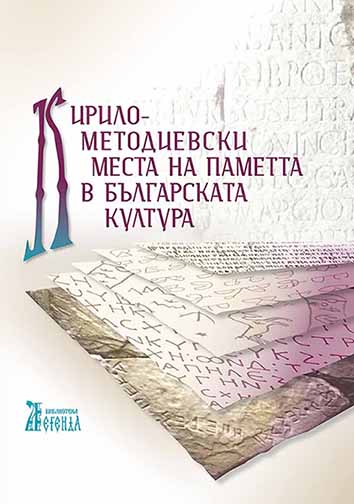За най-ранната топография на култа към св. Седмочисленици. Обособяване на култа
On the Earliest Topography of the Seven Saints Cult
Author(s): Evgeni Zashev
Subject(s): Language studies, Visual Arts, Modern Age
Published by: Кирило-Методиевски научен център при Българска академия на науките
Keywords: St. Seven Saints; lieux de mémoire; written monuments; artifacts.
Summary/Abstract: The current research traces and summarizes the information about the historical persons from the circle of the Seven Saints, paying special attention to the distinction between mention, enumeration and grouping. Various historical evidences are examined as focal memory points of a conjoint cult of the Seven Saints – some of them are literature sources – the Prologue life of St. John Vladimir (1690), the Berat liturgy for Seven Saints (c. 1720) and the Moschopol liturgy for Seven Saints (1742), other sources are artefacts –eight wall paintings, three icons, a carved medallion and three reliquaries. Based on the mentioned sources, the earliest topography of the Seven Saints cult is outlined, and the individual monuments are presented in their geographical, cultural-historical, and architectural context. There is an emphasis on the fact that the historical evidences of the early stage of the propagation of the Seven Saints cult derive from a relatively limited geographical area – the lands of the Berat diocese and its immediate surroundings. The images from Dratcha monastery (1735) and from the church “St. Prophet Elijah” in Siatista (1744) are rather exceptions. As a conclusion, it is noticed that the language of the entire described tradition, including both the three written monuments and the numerous images and artefacts, is Greek. This tradition cannot yet be recognized as a genuine Bulgarian national initiative of the revival type, but rather is a regional post-Byzantine cult that arose in the southwestern regions of the Ochrid Archdiocese in a multi-ethnic environment with a dominant cultural Hellenism. The artefacts preserved to present days, which are probably only a part of those actually created, testify to the inclusion of the Seven Saints in the sacral pantheon of the Ochrid Archdiocese, thereby raising its ecclesiastical authority and supporting its historical pretensions to canonical independence. The tendencies observed in the perspective of the cult development in the second half of the 19th century are the gradual transfer to the east and northeast to the lands of Macedonia, more compactly populated with Bulgarians, and the appearance of images bringing to the fore the creation of the Bulgarian alphabet.
Book: Кирило-Методиевски места на паметта в българската култура
- Page Range: 53-108
- Page Count: 56
- Publication Year: 2023
- Language: Bulgarian
- Content File-PDF

